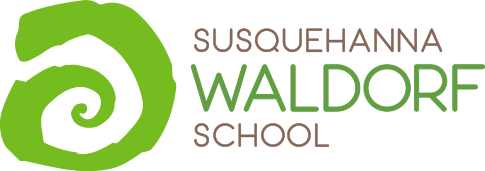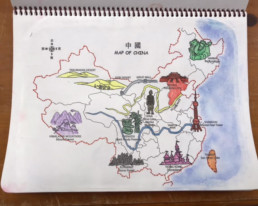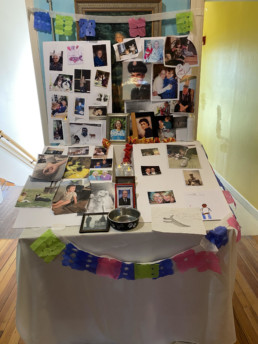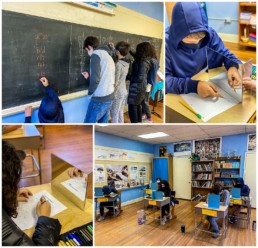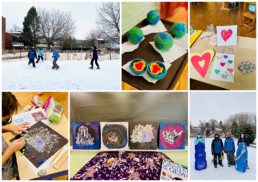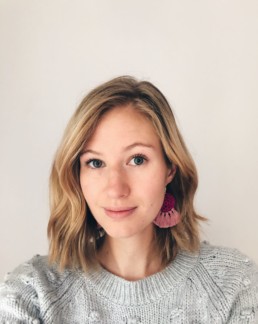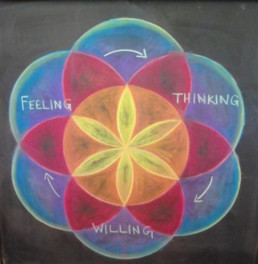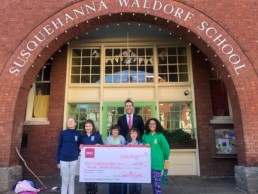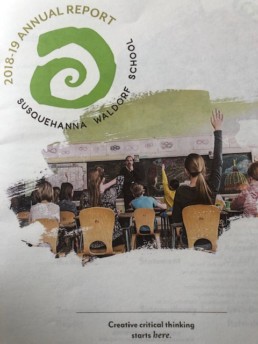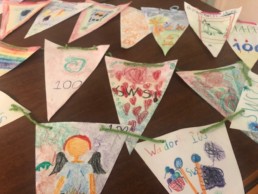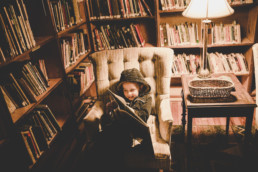Mandarin Lessons with Tseng Lao Shi

Learning world languages is a vital piece of Waldorf education. Waldorf students begin learning two languages in 1st grade. Here at Susquehanna Waldorf School, one of the languages our 1st through 8th grade students are learning is Mandarin.
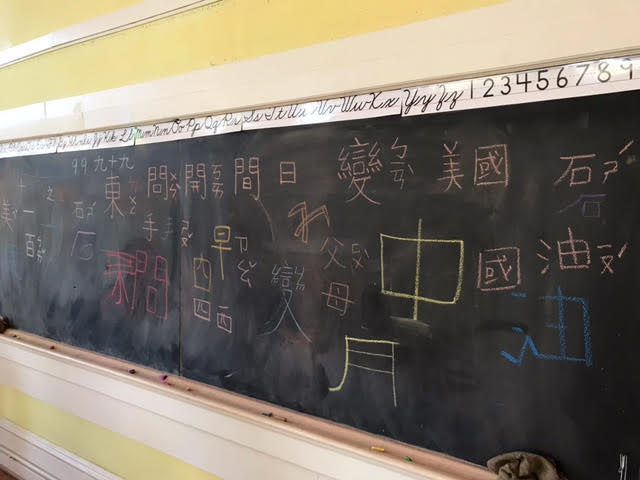
Our students begin learning Mandarin in 1st and 2nd grades through oral storytelling, song, and movement. By the 3rd grade, they begin learning to write Mandarin.
Our class 3 students have loved to write Chinese characters on the chalkboard since they were in the 2nd grade. They often bring characters they find on soy sauce bottles or a Chinese book. "I'm impressed by their ability to write the characters without being taught how to write them first," says Hui-Ling Singer, our Mandarin teacher.
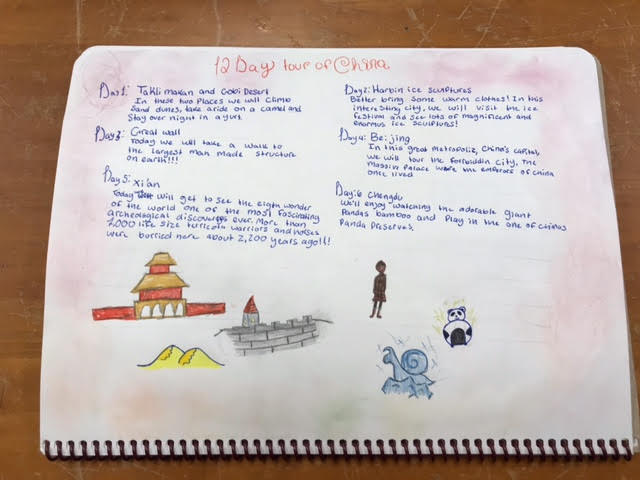
Our class 6 students just finished a 12 day imaginary trip to China. On Day 6, the students visited the panda reserve in Chengdu. The students learned Chinese paper cutting and how to make a panda.
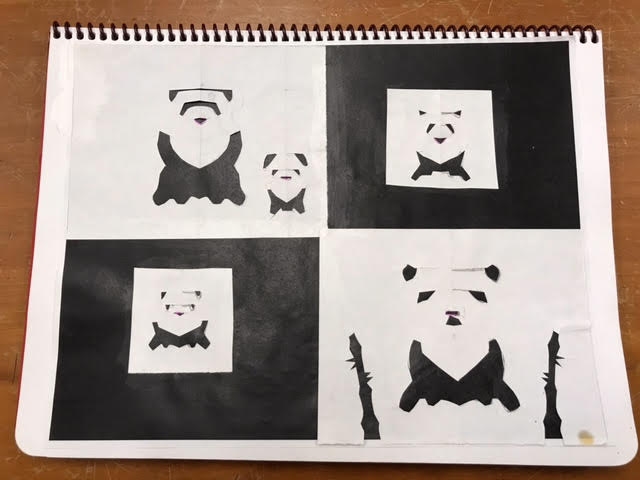
In Waldorf education, we don't just teach a language, we teach culture; which helps our students develop empathy and understanding of different ways of being around the world.
Día de los Muertos, Grades One through Four
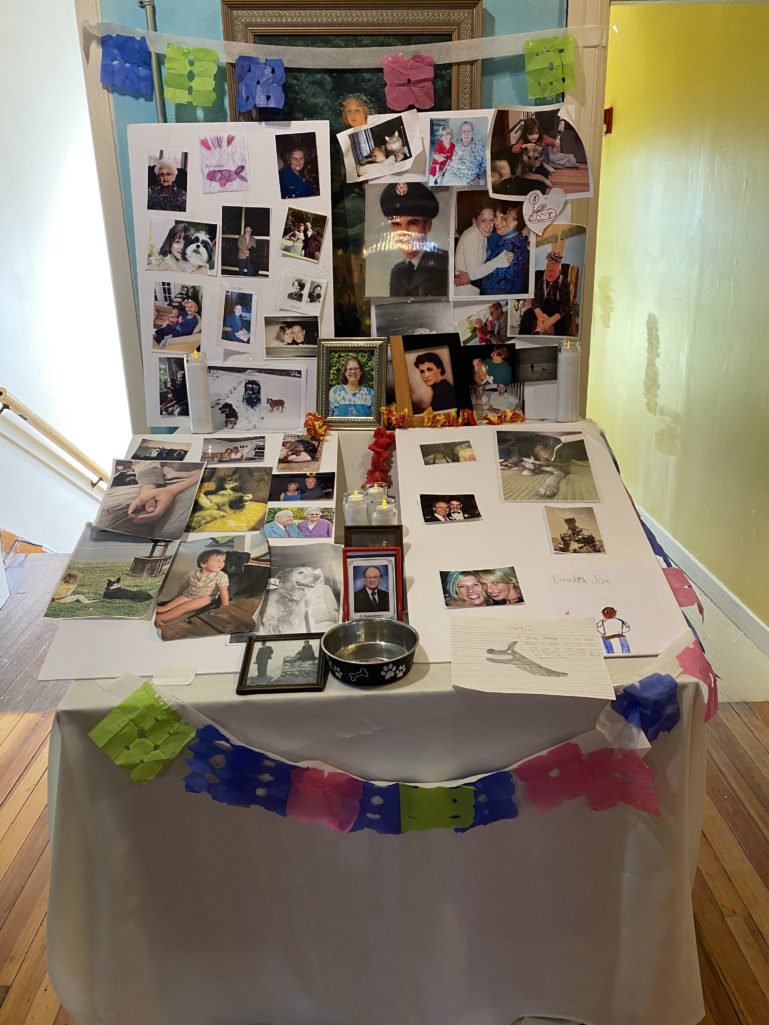
In Spanish class, our students are not only learning a new language, they are learning a new culture! "When students learn a new language, they have to feel it. It is not just about experiencing how people speak their language, but also the way they think and live," says SWS Spanish teacher Fernanda Brito-Munoz.
Grades one through four celebrated Ancestors Day, or Día de los Muertos, on November 3rd. They remembered the lives of loved ones who have departed and shared stories about them (including pets!). After decorating the table with paper flowers, paper flags and pictures of their ancestors, the students discussed their thoughts about family and how important it is to honor life.
It is our hope that this celebration will grow over time and, in the future, will include baking a special bread, decorating chocolate, and the retelling of many, many more family stories.
7th Grade Renaissance History
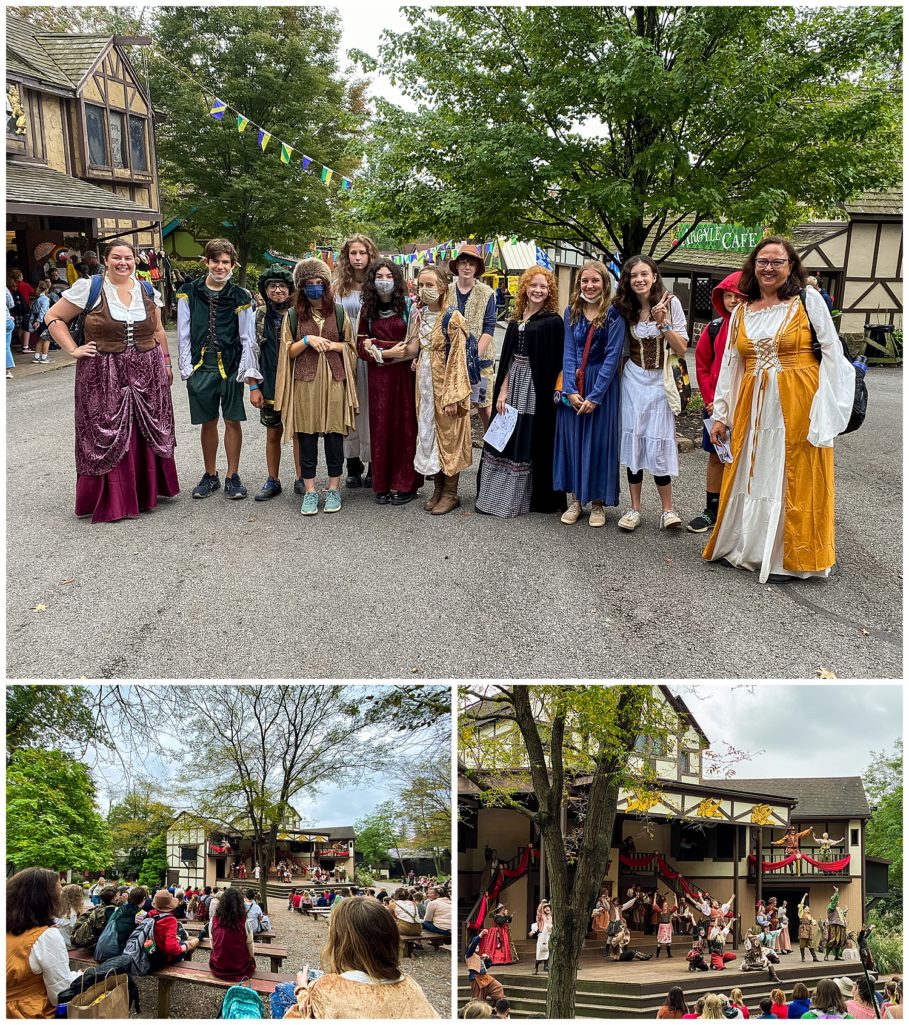
The 7th grade just finished diving into the history of the Renaissance and what beautiful work they did! In Waldorf education, our teachers employ a multi-faceted approach to learning. Ms. Tucker taught the history of the Renaissance through writing, artistic expression, math, reading and even a trip to the Renaissance Faire.
The 7th grade began with the review of life in the Middle Ages, discussing what changed during the Renaissance and why. Next, they learned the biographies and stories of many Renaissance personalities such as Joan of Arc, Elizabeth I & Henry VIII of England, Isabella and Ferdinand of Spain, Lorenzo de' Medici of Florence, Martin Luther, and Johannes Gutenberg. The history came alive with their field trip to the Renaissance Faire, which was presided over by none other than Queen Elizabeth herself!
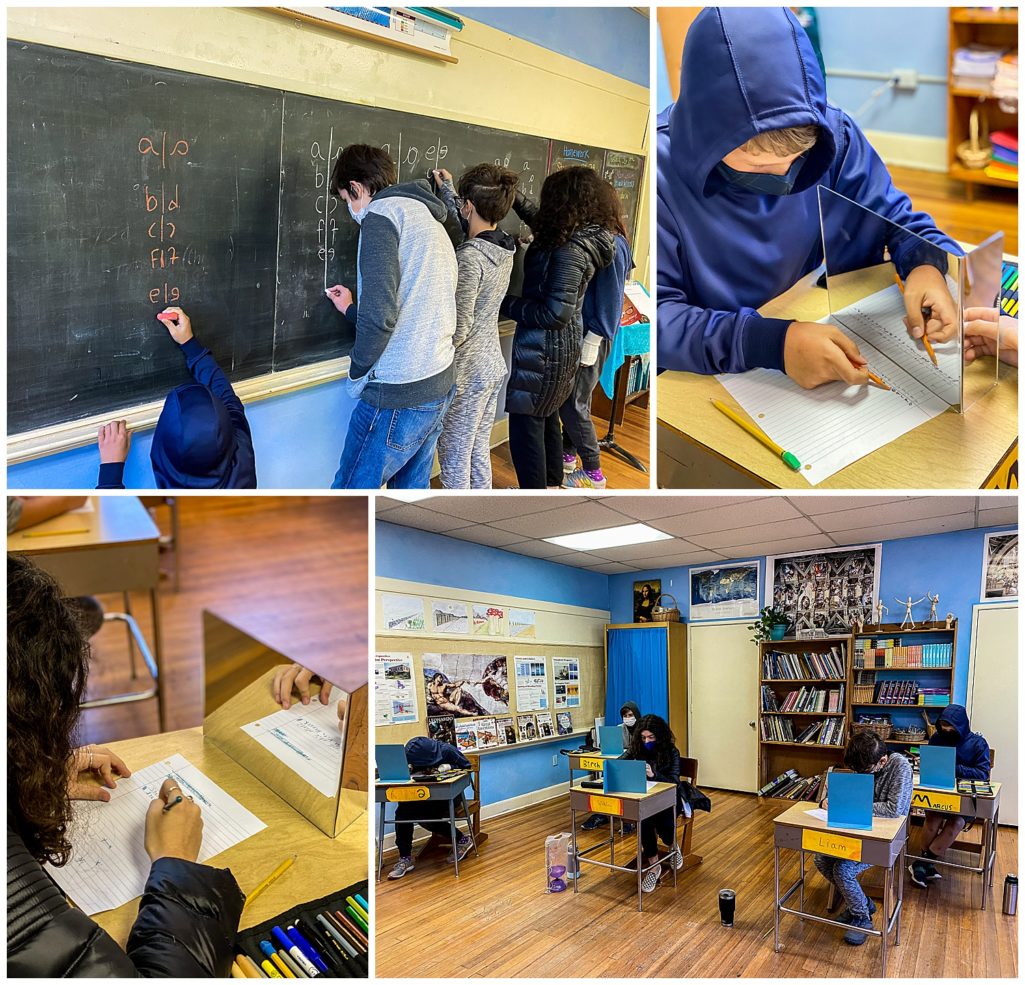
The students wrote love letters to Queen Elizabeth. They put Queen Isabella of Spain on “trial” and wrote about her reign from different perspectives. They read several non-fiction articles about the Renaissance and ended the week reading the short story "The Black Cat" by Edgar Allen Poe aloud while sipping hot chocolate. They also learned the “Song of the Witches” verse from Shakespeare’s Macbeth during morning speech work, which they performed for the community at our Harvest Assembly.
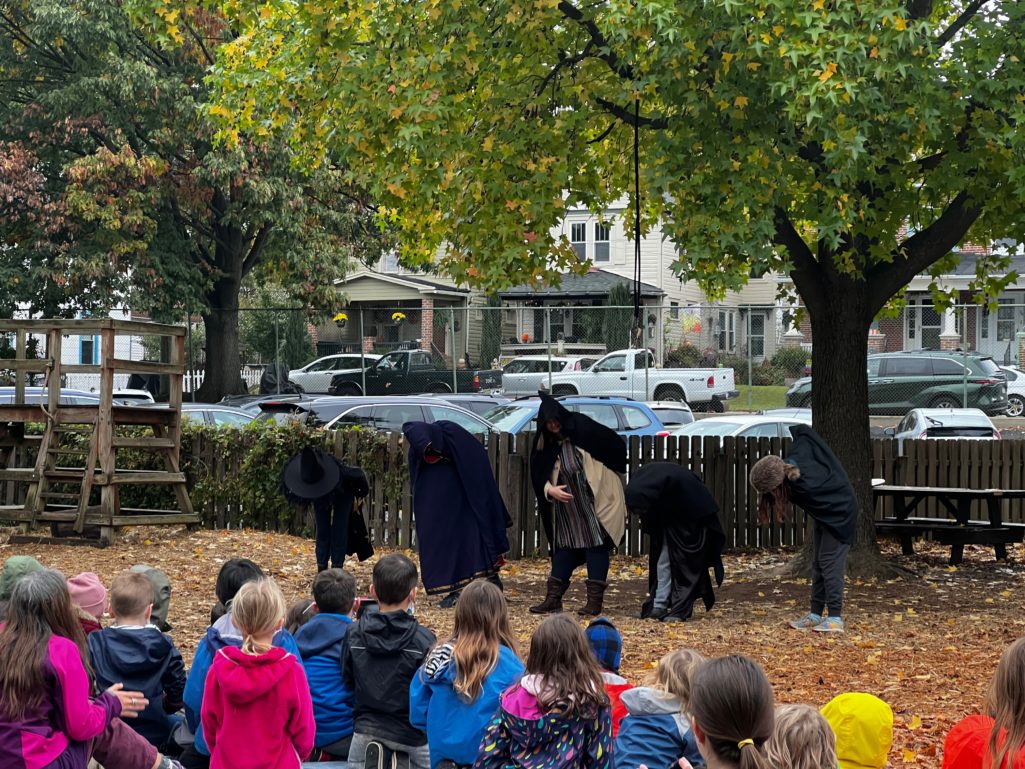
The 7th grade ended their study of the Renaissance with an entire week dedicated to Renaissance art. They viewed and heard stories about the creation of some of the great works of 4 Renaissance masters: Botticelli, Leonardo, Michelangelo and Raphael. The students studied the proportions of human faces while drawing a portrait of Queen Elizabeth and they practiced mirrored writing in the style of Leonardo Da Vinci, who notoriously wrote from right to left with mirrored letters in his notebooks. They experimented with sketching hands and painted the "Hands of Adam" detail from the ceiling of the Sistine Chapel with their paper pinned above their heads to better understand how it would have felt for Michelangelo.
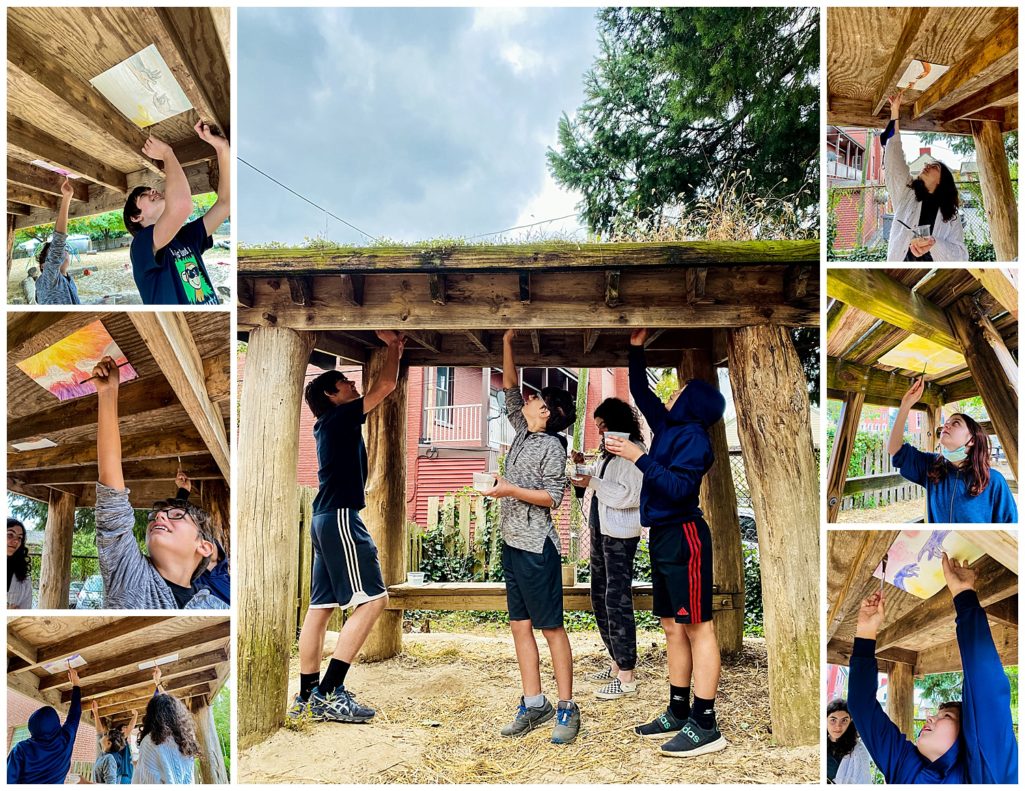
The 7th grade ended this learning block with a research project and presentation featuring 6 "outrageous" women who lived during the Renaissance. Their next main lesson block is Physics, where they will continue their study of acoustics, optics, electricity and magnetism, and introduce a new topic: simple machines.
6th Grade Geology
In Waldorf education, we use a very experiential approach to Science. A hands-on, multi-faceted approach allows all students to meaningfully engage and connect with their learning: Artistic elements, creative writing, and field trips are combined with visual, audible, and tactile lessons to bring science to life.
This month, our 6th Grade dove into Geology and Mineralogy, and what an experience they had!
The classroom is full of volcano paintings, felted layers of the earth, fossils, crystals and rocks, and hand-made cave drawings. Imagine the students’ enthusiasm as they partook in the following work: As they learned about the interior of our earth, they wet felted layered models of the Earth. As they learned about Plate Tectonics, they used graham crackers and cool whip to model the different plate boundaries, and what changes in the Earth's crust they create. (Fun, messy, AND delicious!) As they studied the characteristics of volcanoes, they free-painted their own volcanoes during an Artistic period.
The class then explored the world of rocks and minerals. They started off by bridging their Roman History block (from earlier in the school year) with their study of volcanoes by learning about Mt. Vesuvius, the volatile composite volcano in Italy, and its infamous eruption during Roman times that destroyed, covered, and preserved the city of Pompeii in 79 CE.
They then learned about what rocks and minerals are, where they’re found, and all the different ways we use them. Thanks to the school collection and the generously donated samples from the geology lab at HACC, (from a class parent), they had a stellar display of all different types of rocks, minerals, and fossils to explore.
Next, they studied the rock cycle and how different types of rock are created, destroyed, and recycled into new types of rock. To demonstrate this cycle, they used Starburst candies cut into small pieces and squished them together to create sedimentary rocks, added a little heat AND pressure to mold them into metamorphic rocks, and melted and cooled them to make igneous rocks.
They wrapped up the block by learning about the properties of minerals and how to identify them, discussed mineral crystals, and made some beautiful drawings of mineral crystal clusters on black cardstock using chalk pastels.
To round out the classroom experiences, class teacher Summer Tucker scheduled a field trip, a guest speaker, and tied in Language Arts as well as a creative artistic project- bringing all of their new learning to live.
After hearing about limestone caves and how they are formed, they visited Indian Echo Caverns, a local limestone cave system. Over the course of the day, they attended 3 private, hands-on workshops, (Rockin’ Rocks, Fossils Forever, Mineral Madness), and had a 1-hour private cavern tour.
A class parent presented beautiful mineral crystal samples and shared many interesting stories of how she unearthed these crystals from different areas all around the country. She also generously gifted each student with a canvas and small bag of crystals, which they used to make their own beautiful crystal grid artwork.
Students created a diary entry from the first-person perspective of someone living through the eruption of Mt. Vesuvius, as part of their language arts and creative writing work.
Finally, during the scheduled artistic time, they learned about Lascaux Cave in France, an ancient limestone cave covered with prehistoric cave paintings, which was accidentally discovered by 4 teenage boys in the 1940s. After hearing the story, and taking a virtual tour through a replica of the cave, they created their own version of the cave paintings by working together to make a 12ft cave art mural (going as far as hanging it behind the stage and painting by candlelight).
Well done 6th grade. What a fun, informative, and creative Geology Block you’ve had!
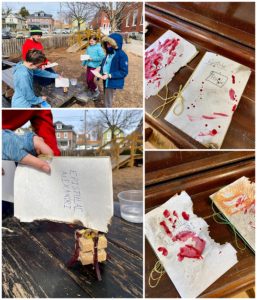
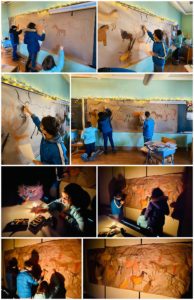
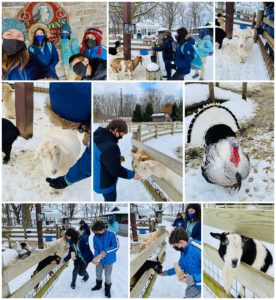
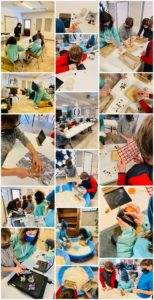
SWS Alumni Spotlight: Dakota Lehman
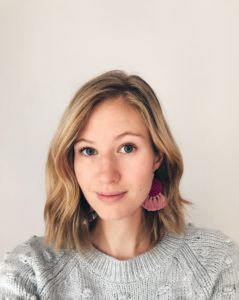
Last week I had the chance to speak with SWS Class of 2009 Alumni Dakota Lehman. Dakota just completed her Master’s Degree in Art Therapy at Concordia University in Montreal, Canada. I don’t think I could have found a better person to kick off our SWS Alumni Spotlight Series given the many emotional and psychological challenges our community --and the whole world-- now faces because of the coronavirus. Her optimism and tenacity shines through the uncertainty; and I was present to the spirit of Waldorf in her words.
Her Story Begins At Susquehanna Waldorf School
Upon graduation from Susquehanna Waldorf School, Dakota and her family moved to Asheville, N.C.; she transitioned from a class of eight students at SWS to a massive high school comprising eight buildings! She welcomed the change. Near the end of her high school career, she enrolled in a psychology class which peaked her interest in the mental health field and by the time she entered college, her vision had become clear. Integrating her two passions, she went on to complete her Undergraduate studies at the University of North Carolina-Wilmington with a B.A. Psychology and minor in Visual Arts. No stranger to making moves, Dakota decided to head to Canada for her Master’s program; she is now in the process of completing her licensure and in the meantime, is ready for her next Big Adventure.
Here’s Our Conversation
Diane: What’s special to you about Waldorf?
Dakota: The community aspect, support from my class, the arts, and the rituals...from the festivals with the bigger community to taking moments to come together in a circle during school. Getting moments to take a second to just breathe and be with yourself. I am not naturally a “take a moment person,” I am a stress and anxiety person! So I remember holding those moments of stillness and togetherness and positivity.
As an adult I’ve been able to make really good connections with people my age. Waldorf taught me the importance of social-emotional learning, like learning to navigate hard times or friendship issues. We learned to navigate that at an early age, we had the support of teachers and parents which allowed me to learn how to make better connections as an adult.
Diane: How has the Waldorf Methodology inspired you in your work or in your life?
Dakota: My Waldorf education gave me a way to process information in the world and in myself through so many different approaches to learning. Sometimes I will sit and knit or crochet as a way to process my day or something that I am going through. That’s something that I had the privilege of learning early in life and I’ve learned to use that skill as an adult.
Making art in my early years helped me to understand in high school and college that others may learn in different ways. I was given the tools to be able to adjust and adapt to learning in different environments and I wanted to be able to give the experience of using art mediums in different ways to others. I now work with children, and especially with the influence of technology, it’s important to have other options as new ways to process and explore life.
Diane: What are you up to in your career?
Dakota: I want to work as an Art Therapist but I have to get my license, so it may take a while to find the job that I really love in Art Therapy. So I am applying for art teacher and school counselor positions right now. I love working with children so going back into a school environment would be wonderful.
I would love to work in a Waldorf environment because of how like minded that community can be. However, I worked with the equivalent of child protective services in Canada and learned the value of providing those services and resources to young people who wouldn't normally have access to them. Being able to give and share is so rewarding; to work with kids who haven't even had access to art materials before is special. You meet these kids and see their resilience.
So I am open to the possibilities.
Diane: Did your experience at SWS and the Waldorf ethos of service help to inspire you to seek your career path in some way? Or would you say that service is just a part of your personality?
Dakota: I don’t see myself as a service-giving person, but I really like connecting with people. I have definitely always been like that. I see myself as someone who wants to give space to others and I got that from Waldorf in different ways... going back to circle, the festivals and rituals, but I also think it’s just who I am.
Diane: Do you remain connected with the SWS community?
Dakota: Yes! I am still close with my SWS cohort and teacher who I get to visit occasionally. And I had a video call with everyone from my class just the other day.
Thanks, Dakota, for sharing stories about your path with the Susquehanna Waldorf School Community! We wish you joy and peace as you continue your journey.
With Warmth and Support,
Diane Richards, Development and Alumni Coordinator
Diane Richards is a former K-12 Visual Arts Teacher, a Trauma-Aware Yoga and Mindfulness teacher and is a graduate student studying psychotherapy at Widener University
Right Now I Feel: A Mindfulness Practice
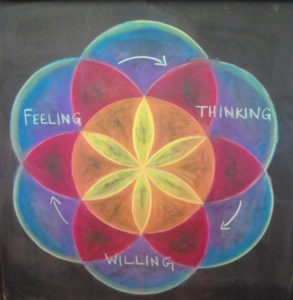
A "Waldorf Wellness" Blog Series to Help You Build Resilience
Right Now I Feel
How are you feeling right now? I mean this quite literally, if you closed your eyes for the next ten seconds and checked in and had to choose just ONE word from that inner-listening, what would it be?
Right now, I feel ________________.
It’s ok if you don’t quite know. It’s ok if the idea of narrowing down your complex emotional state to one word feels impossible. There is no “right way” to cope with the trauma, turmoil and anxieties of a crisis. What IS important is that we do SOMETHING to get our inner states to shift. And often this something can be a simple as a quick check in:
Right now, I feel________________.
In the midst of a crisis we can easily (and understandably) get caught up in a whirlwind of emotional overload. We are thinking about our stability on so many levels. We are thinking about the wellbeing of our families, the safety of our children, the health of our elders. We are thinking about things we have never had to actually think about like breathing, social distancing, meticulously disinfecting, quarantining, distance learning, staying in place. We may be thinking about those who are not thinking about these measures.
Humankind exists because of these thoughts/instincts about how to survive. Our Central Nervous System (CNS) is hard-wired with functions to ensure that when a threat is posed to our safety, protective factors come online quickly to defend our ability to stay safe. Our Sympathetic Nervous System (SNS) is one of these protective brain/body functions. When this system is activated, it prepares us to FIGHT or FLEE from dangerous situations or people. Our Parasympathetic Nervous System (PNS) might come online and tell us to FREEZE when we are totally overwhelmed by a situation that feels out of our control.
If you were able to answer the question: Right now I feel____________, what is the word that came up for you?
(Here is a brief list of feeling words if you need some inspiration: Exhausted, confused, silly, morose, helpless, optimistic, bored, frustrated, annoyed, inspired, motivated, distracted)
What’s the point?
I have found myself feeling “stuck” and “overwhelmed.” These are examples of a FREEZE survival response.
If you said “angry” or “irritated,” these are examples of a FIGHT response.
If you said “anxious” or “afraid,” these are examples of a FLEE response.
What I hope to offer you is the BIG EXHALE that all of this is normal and -- in fact -- these reactions to a crisis are the building blocks for our ability to cultivate RESILIENCE. If we can pluck JUST ONE feeling from the whole tornado of emotions that surface as we navigate this crisis, we have something to respond to with intention and compassion. We can get a little unstuck, we can soften our anger, we can calm our anxiety if even for just one moment.
When we turn a thought into a word we have more power to get out of instinctual/survival-mode. We can actually FREE UP a little room in our brains/minds (and therefore in our bodies and our spirits because it’s all connected) to help us move forward feeling a little calmer and a little more in control.
A Family/Community Wellness Practice
Try this “Right now I feel” exercise with your family members.
- Sit in a circle and each take a turn saying “Right now I feel_______”
- Then, each person can spend five or so minutes sharing/exploring why that feeling is there -
- Could this feeling be because you miss your friends at school?
- Do you think your feeling came up because grandma is sick?
- Or because of stress learning how to work and learn from home?
- After each person shares their “exploring why” a feeling has come up, go around the circle one more time.
- Each person shares again: “Right now I feel________”
- Has anything changed? Did a new word come up? Just pause to reflect quietly as a family or community.
- That’s it!
Sometimes moving forward in a hopeful way has nothing to do with doing a whole bunch of stuff! Simply working with ONE moment in time and ONE feeling can be really empowering and enlightening. Give it a try and let me know what you think!
I’ll offer some more “clearing” practices (including art therapy projects!) in this Waldorf Wellness blog post series so that we can continue to build resilience and connection, and inspire hope as individuals, families, and as a Waldorf Community.
With Warmth and Support,
Diane Richards, Development and Alumni Coordinator
Diane Richards is a former K-12 Visual Arts Teacher, a Trauma-Aware Yoga and Mindfulness teacher and is a graduate student studying psychotherapy at Widener University
SWS Financial Aid Program supported through BB&T's EITC gift
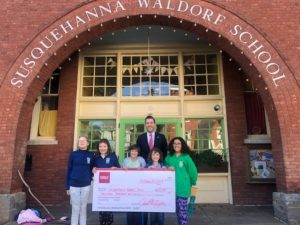 Susquehanna Waldorf School received a donation from BB&T Bank through the Commonwealth of Pennsylvania’s Education Improvement Tax Credit (EITC) program. The check for $14,000 was presented by James Malfregeot,II, BB&T’s Market President for Lancaster County. This marks the seventh year that BB&T has selected Susquehanna Waldorf School as a recipient.
Susquehanna Waldorf School received a donation from BB&T Bank through the Commonwealth of Pennsylvania’s Education Improvement Tax Credit (EITC) program. The check for $14,000 was presented by James Malfregeot,II, BB&T’s Market President for Lancaster County. This marks the seventh year that BB&T has selected Susquehanna Waldorf School as a recipient.
“BB&T is proud to continue its unwavering support of the Susquehanna Waldorf School, its amazing students, and devoted staff. Waldorf is on an incredible mission, and we are honored to be one of their many partners along the way,” says Mr. Malfregeot.
BB&T’s continued support allows more students to afford Susquehanna Waldorf School, where the arts, creativity and imagination are woven into every aspect of academics. “EITC donations directly support the financial aid program at SWS, thereby allowing more students to afford to attend the school. SWS is shaping well-rounded human beings- our future leaders. Donations like that of BB&T impact so many lives- today and in the future,” says Board of Trustees member, Ernie Schaefer. 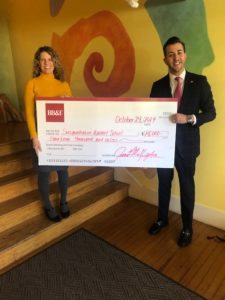
EITC is a program providing tax credits to eligible businesses contributing to a Scholarship Organization, an Educational Improvement Organization, and/or a Pre-Kindergarten Scholarship Organization. Businesses, as well as organizations receiving the EITC funding, must apply and be approved by the Department of Community and Economic Development to participate.
About Susquehanna Waldorf School: SWS is a Nursery through 8th grade school serving students in Central Pa. Waldorf education recently celebrated its centennial anniversary- the first Waldorf school opened in Germany in 1919. SWS opened its doors locally in 1987, and provides a rich and challenging environment that inspires its students to reach the highest level of intellectual, spiritual, artistic and physical achievement. Through the integration of these pursuits, the potential in each child is nurtured to fully develop his/ her unique capacities. SWS aims to instill a lifelong love of learning and a sense of compassion that benefits them, their community and the world at large.
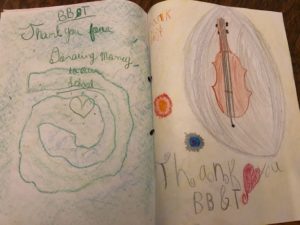
About BB&T:
BB&T is one of the largest financial services holding companies in the U.S. with $230.9 billion in assets and market capitalization of approximately $37.6 billion as of June 30, 2019. Building on a long tradition of excellence in community banking, BB&T offers a wide range of financial services including retail and commercial banking, investments, insurance, wealth management, asset management, mortgage, corporate banking, capital markets and specialized lending. Based in Winston-Salem, N.C., BB&T operates more than 1,700 financial centers in 15 states and Washington, D.C. and is consistently recognized for outstanding client service by Greenwich Associates for small business and middle market banking. More information about BB&T and its full line of products and services is available at BBT.com.
BB&T and SunTrust are coming together in a transformational merger of equals to create Truist, the premier financial institution in the country. The combination of these two iconic franchises will create the sixth-largest U.S. bank with 275 years of combined history.
THANK YOU BB&T!
2018-19 Annual Report
This academic year began with (a new Nursery program and) 3 full Kindergartens and Grades 1-8. SWS has not had a full complement of classes in 8 years. Our beloved building is full of joyful noise! (from Treasurer's Report)
DOWNLOAD 2018-19 ANNUAL REPORT
"Our world could only benefit from an institution that hosts and 'births" such well-rounded, community-minded and reverent new leaders."
- SWS Parent
100 years of Waldorf Education!
Waldorf Education founder, Rudolf Steiner, formed the first Waldorf School in Stuttgart, Germany in 1919. Today there are over 1,100 Waldorf schools and almost 2,000 Waldorf kindergartens in 80 countries around the globe.
In celebration of Waldorf education’s centennial, Susquehanna Waldorf School joins other schools worldwide engaging in social and environmental impact projects. The higher aim is to regionally and internationally create a vital interconnectedness essential in today’s world.
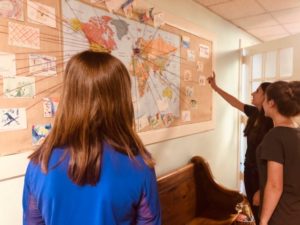
Two of the projects that SWS has participated in over the past year are: The Worldwide Postcard Exchange and the Greenbee Wildlife Web. SWS students joined Waldorf students from around the world in a global postcard exchange initiative to both broaden the perspective of students and to celebrate the 100th anniversary of Waldorf® education. Students in every Waldorf school around the world are sending a postcard to every other Waldorf school. Each postcard is individually designed by a young person, telling or showing something of his or her country, school of self. All the postcards received at SWS are rotated through a world map display, showing where each card originated. The visual representation allows students to see where these connections are- near and far.
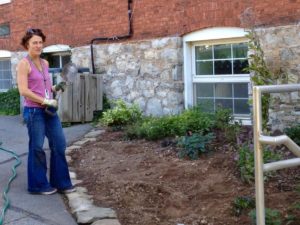
As part of Waldorf’s ongoing mission to create a more sustainable future, schools across the globe are taking action to support pollinators (honey bees, butterflies, moths and more) as part of the Greenbee Wildlife Web. At SWS, students, parents and faculty came together to plant several pollinator plants and shrubs around the campus over the summer. SWS representative Michelle Wann states, “SWS students in the third grade will care for the plants as part of their farming and gardening curriculum, as well as the fifth graders, who are studying Botany”. The school says this project supports Waldorf’s ‘three-fold mission to protect and preserve the honeybee and all pollinators, create a more sustainable future for our planet’s ecology, and teach our children to be good stewards of the earth’.
All the campaigns aim to stimulate dialogue around human values in education and support initiatives that revitalize society and our relationship with each other and our earth. An introduction video to Waldorf education and its centennial celebration can be found here: Waldorf 100: Learn to Change the World
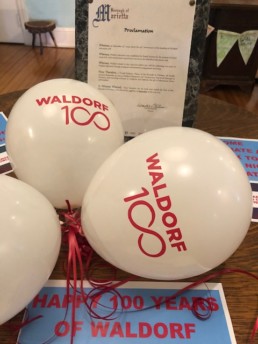
SWS Brand Refresh: Reflecting on Our History, and Looking Ahead
“Our logo makes a statement about us—our inner and outward expression of the organization’s goals and values. Our logo exists in many places beyond the school website. It has recognition in the market and deep associations with other Waldorf schools. The logo lives soundly with many communities that we serve.” SWS Alumni Parent
Years ago, a logo task force (consisting of SWS School Board members and faculty, along with numerous passionate parents) set out to create a logo/brand for the school. Their purposeful work meant identifying the core values of the school- what it stood for then and what they wanted to carry forward into the future. They knew they wanted the logo to show incarnation of our children and to have a presence within nature and to make sure it included our inexhaustible inner light. “We did not want a snappy marketing icon.” The SWS logo carries with it deep and meaningful roots.
The spiral that our logo is known for was found originally as a petroglyph, discovered on Walnut Island (Lancaster County) in our beloved Susquehanna River. Alone, the petroglyph offers a deep, simple, intrinsic truth, a feeling of permanence and longevity, of geological relevance and sacred geometry. The inner coil of light was placed in a square box because of the beauty of its paradox, but also as the expression of the inner and outer community relationship in a continuum.*
Over the last year, SWS has carefully undergone the process of updating our school website. Not only did we want to be more user-friendly and accessible, we also wanted our “brand” and outward messaging to reflect who and where we are as a school. The new website, launched in late October, reflects a maturing school. Through beautiful imagery, the site highlights the work of community and the work of our developing children, while also leading new families through the value of Waldorf education. The gently updated logo is supportive of this as well. Holding to the foundational elements of the spiral and its color, the logo also reflects the colorful, warm energy presently elevating SWS into a bright, prestigious and sustainable future: honoring our school’s past, nurturing the lives of children and families today and looking ahead with united spirit in community.
This piece is an excerpt from our 2018-19 Annual Report. Read the full report here.
*Source: “From the Heart of the Task Force: An introduction to our New Logo.” June 1, 2004. Read the original "From the Heart of the Task Force: An introduction to our New Logo" article here.
